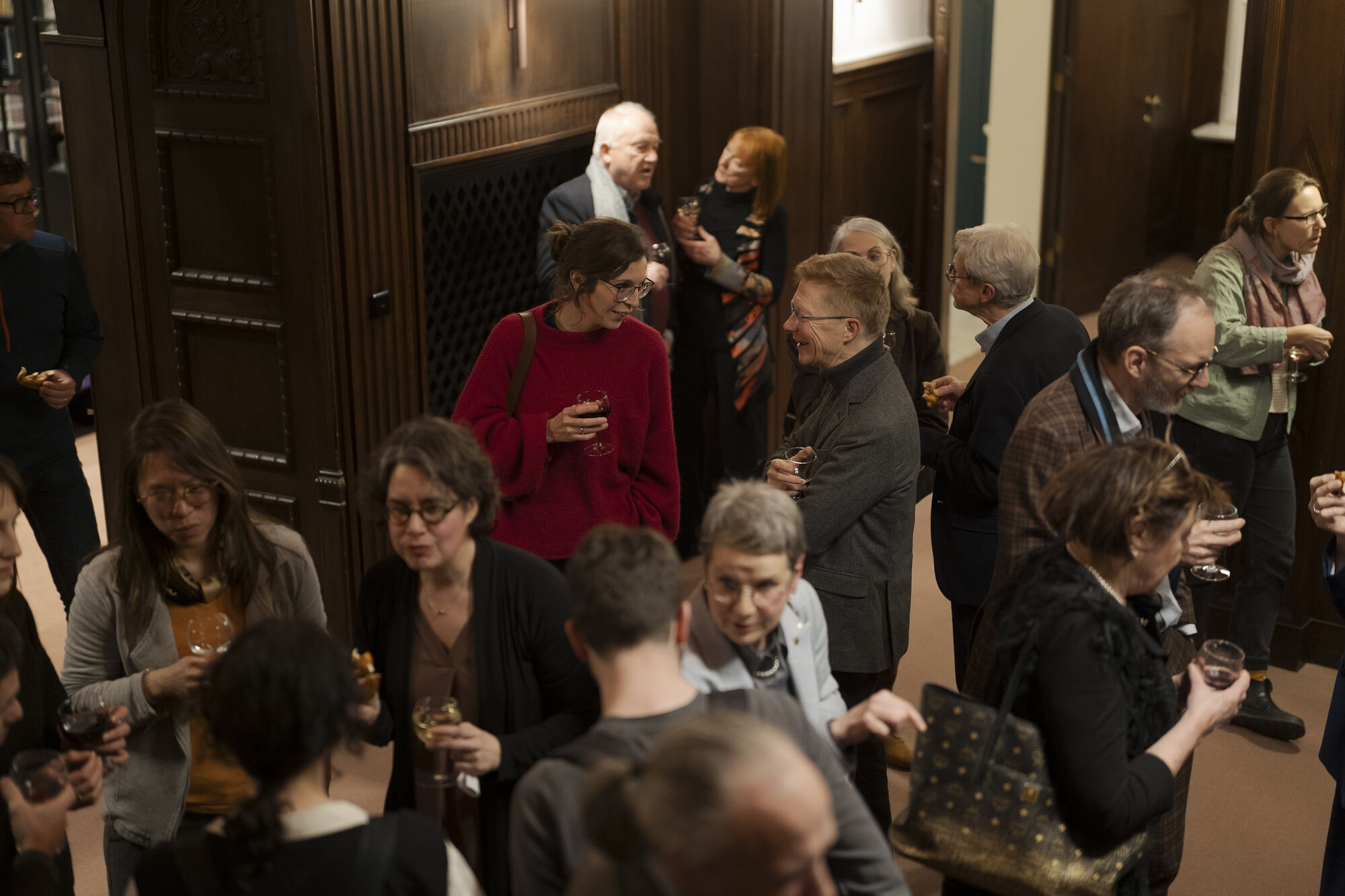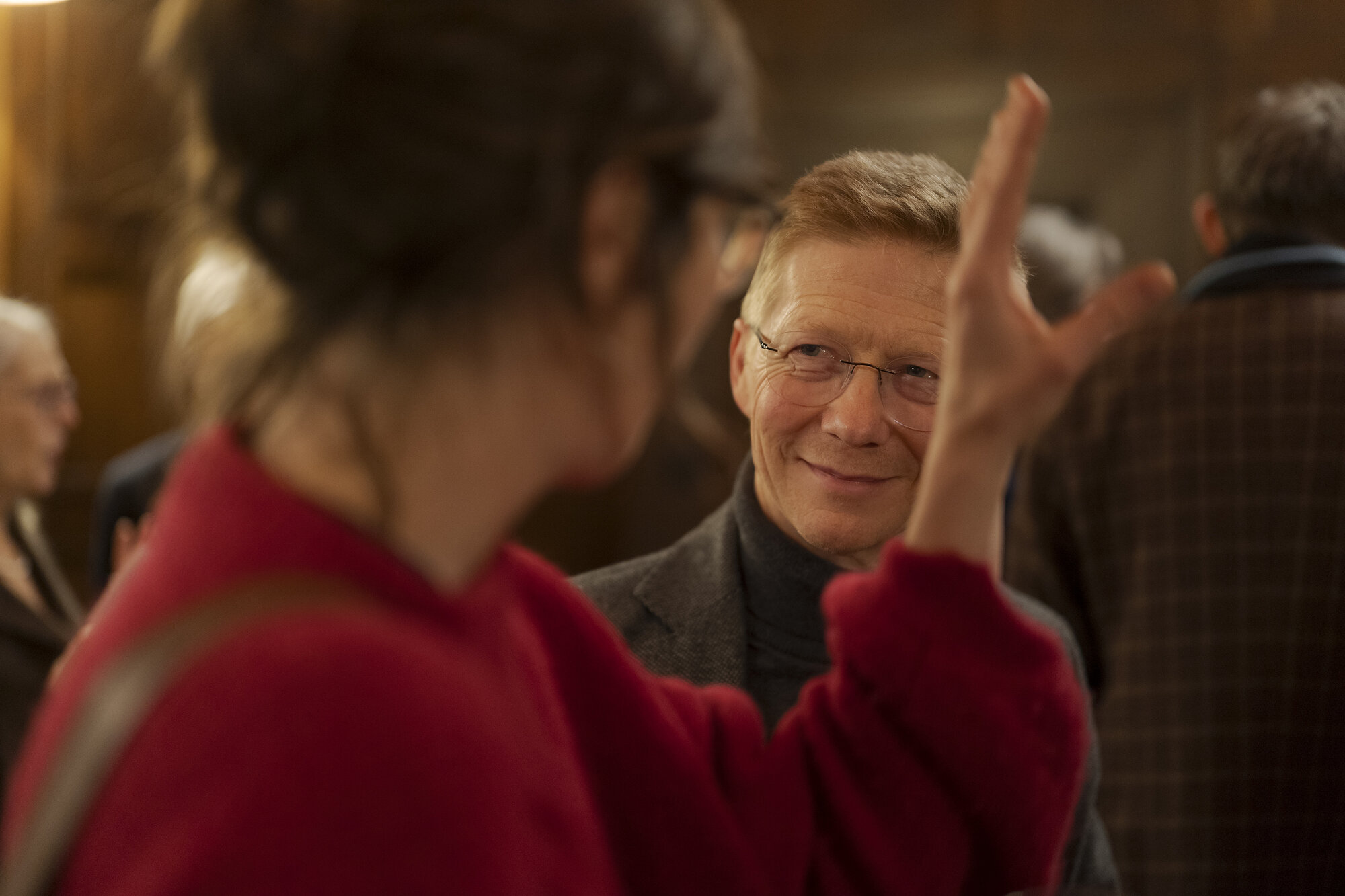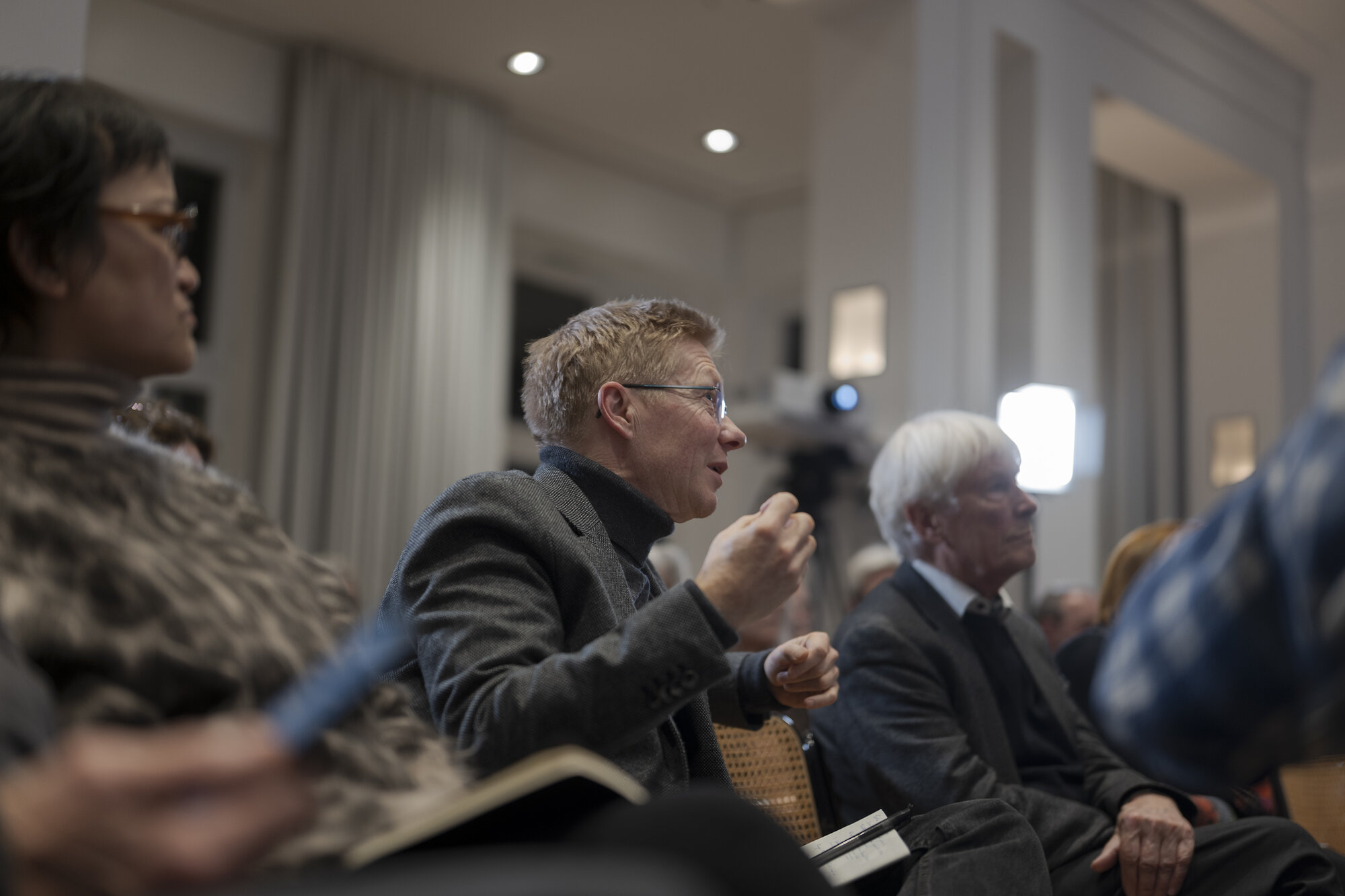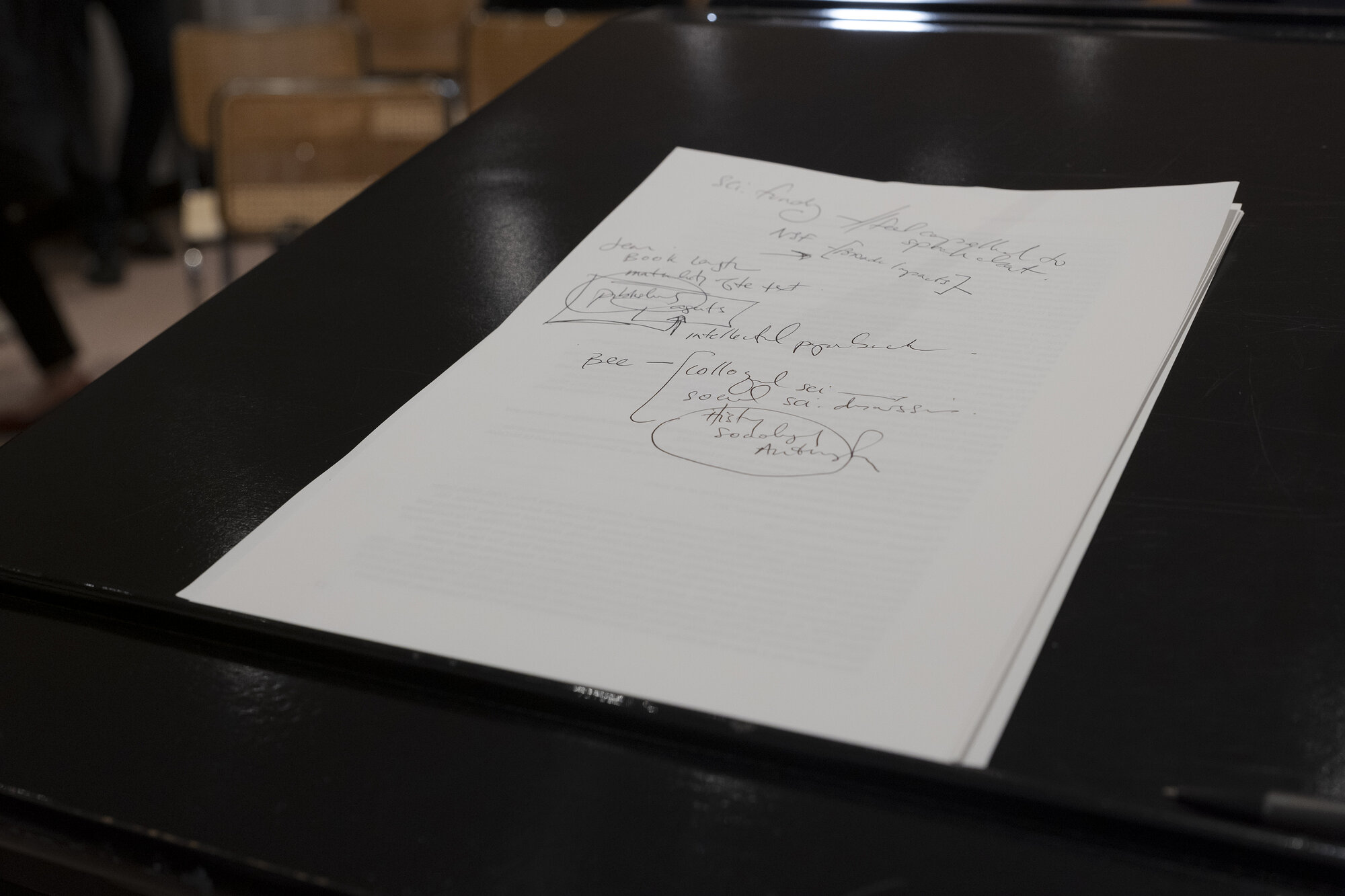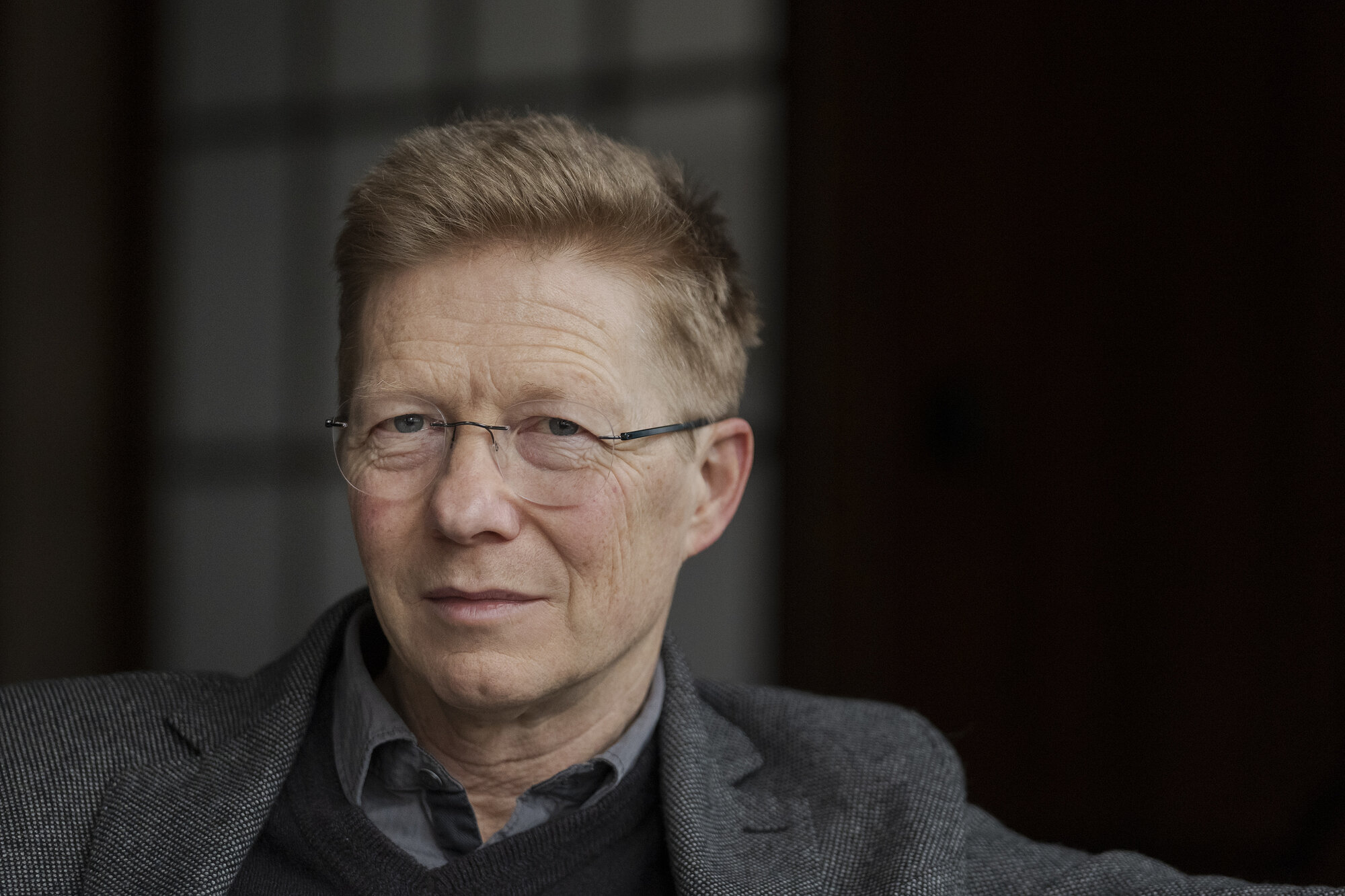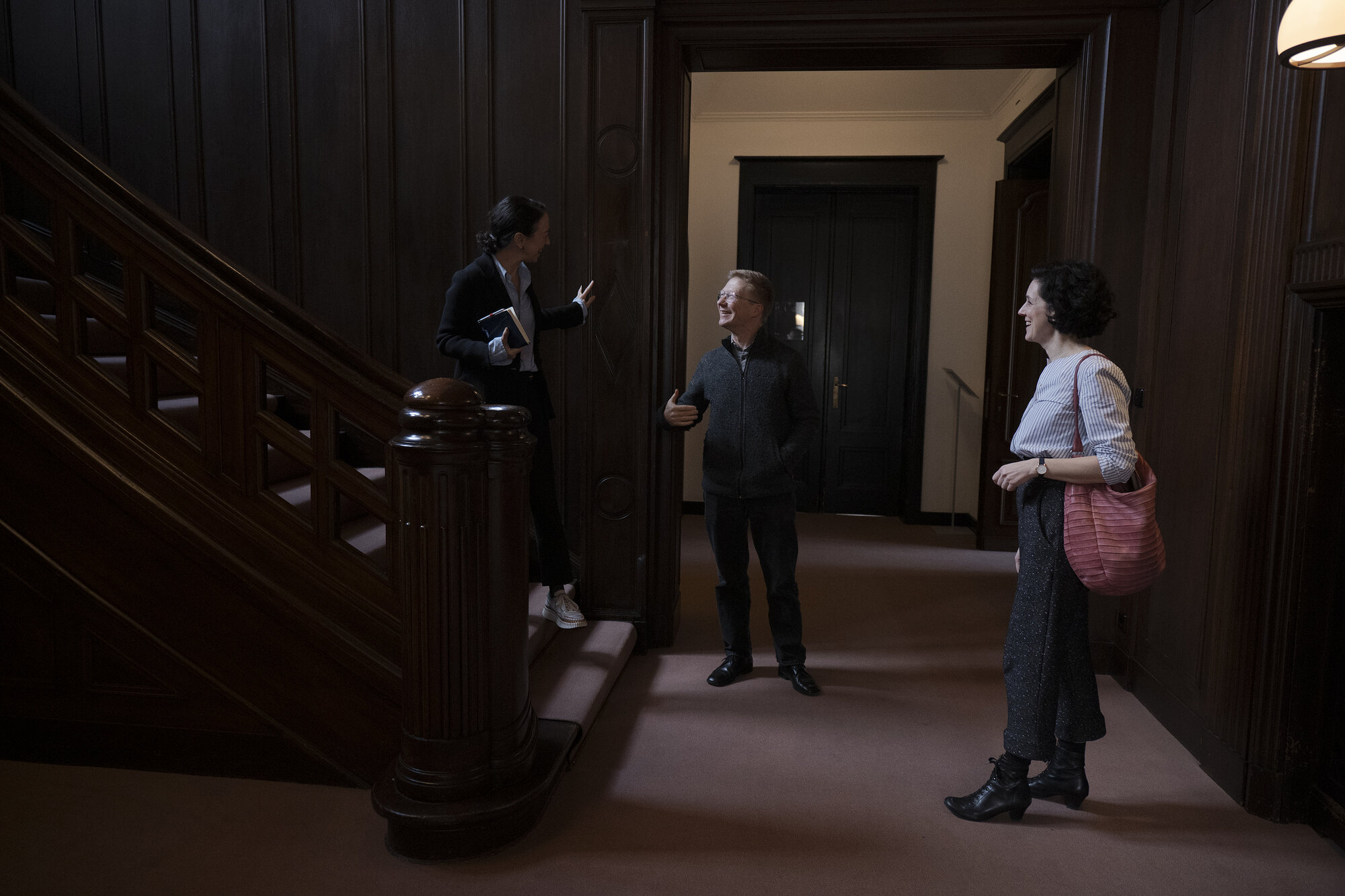Issue 19 / April 2024
The Sound of Chestnut Blossoms
by Manuela Lenzen
The neurobiologist Giovanni Galizia, Permanent Fellow of the Wissenschaftskolleg, is researching bees’ sense of smell in order to better understand the brain
If a chestnut tree is in full bloom in the vicinity of a beehive, word quickly spreads among the foragers. With their famous waggle dance, they alert their sisters to the nutritional source. Yet many a bee doesn’t fly to the recommended chestnut tree but instead to another. This gives researchers a clue as to what’s going on in their heads – apparently the bees know their territory and the trees within it. The scent of pollen that clings to prancing bees reminds them of chestnuts where they have previously found it.
Giovanni Galizia, professor of zoology and neurobiology at the University of Konstanz and Permanent Fellow at the Wissenschaftskolleg, is researching the sense of smell in honeybees. “Even bacteria have a sense of smell in terms of chemoreception,” he explains. “There is no animal that doesn’t have a sense of smell. Yet even if the sense of smell is the oldest in evolution, it’s alien to us.” For the longest time, in fact, cognitive science has focused on vision – presumably because it’s so central to humans and also easier to research. We see things and assign them words: there stands a chestnut tree. Smells, on the other hand, are fleeting, complex and dynamic and our language is quickly depleted. Something smells or stinks or “smells like.” On this unusually warm day in the Grunewald it already smells a bit like spring.
And humans have very diverse senses of smell. “In my lectures I sometimes pass around scents,” says Galizia, “but the spectrum of scent perception among people is very wide. There are always some who say, I can’t smell that. You have surprisingly little control over what people perceive scent-wise. It’s very different when you show images in a PowerPoint presentation.”
But if smelling is so very different from seeing, then it cannot be enough to study vision if we are to understand just how the brain processes information. Perhaps more and different things can be learned from smelling. Galizia is interested in how the brain ascribes meaning to the signals sent by the sensory organs. “In many species the olfactory system has a very similar neuronal structure, yet the meaning of smells is quite different for them,” he explains. “A scent that is very important to an ant can be completely irrelevant for a bee; the smell of bananas is an alarm signal for bees, whereas for humans it’s pleasant. What’s more, some of these meanings are learned whereas others are innate. How does the brain do that?”
Galizia chose the honeybee since you can observe such a small brain in much greater detail than, say, the human brain. “With bees we can examine individual cells, sometimes even parts of cells,” he says. “But with humans, even with the best imaging techniques, we always see a million cells at once.” The neurons of fruit flies could of course be viewed in even greater detail, and Galizia is also working on these. “My driving impulse is curiosity, I wish to understand how the brain functions and how we process information, but in research I’m also driven by aesthetics. And that’s where the bee is superior to the fruit fly, they’re really great animals.” Giovanni Galizia studied mathematics and biology in Berlin and obtained his doctorate in zoology at Cambridge. His fascination with mathematics helped lead to his decision to specialize in neurobiology. “Mathematics and neuroscience were just a perfect match for me,” he explains.
The air is full of molecules and some of them can be perceived by an organism. In order to do this, it needs olfactory receptors. These are genetically designed. A human being has some 350 of these receptors, while a honeybee has 150, but both humans and bees can perceive a much greater number of smells. “The brain does this through combinatorics,” says Galizia. Different receptors can be involved in the perception of an odor. “If the participant receptors change then the perceived odor changes, so the organism may smell oranges instead of lemons.” All possible combinations of 150 receptors already make for a greater number than all the grains of sand on earth. That should be enough even for a very sensitive nose. The brain must somehow “pick over” these combinations, must extract information from them which it needs for the bees to find the blossoming chestnut.
Although odors seem to us so fleeting, many of them always produce the same patterns in the bee’s brain. “This is so stable,” says Galizia, “that with scents we often test in the lab I can immediately recognize which scent my colleagues have given the bees when I see the images of their brain activity on the computer.” To illustrate what it might be like for the brain to smell something, Galizia brings another modality to bear: he translates the activity of the olfactory receptors into sounds. “The usual images employed to visualize neuronal activity are static,” he says. “You need to know that the activation takes place over time. And if you show a film instead of an image, it makes little optical difference which areas light up at the same time.” But if every active receptor is depicted through a sound, every smell is a chord that rings out and fades away again. And if you replace one tone with another for a different scent, you get a different chord. “Major might then become minor, that’s quite intuitive,” says Galizia.
But the chords only reflect the neuronal activity in an incomplete manner. “The scents of chestnut blossoms, for instance, are in the air like eddies of smoke and the bee flies through them,” says Galizia. Instead of individual chords, their smelling would have to be translated into a melody, a sequence of chords. If Galizia had his way, scientific publications would perforce include not only image data but sound files. You can listen to some of the smells at his institute’s website. And Fellows of the Wissenschaftskolleg have already had the pleasure. “I played some scents on the piano for them at a colloquium – at least I can pick out the chords,” reports Galizia who actually plays the guitar and saxophone.
The combinatorics of the receptors is by no means all that evolution has worked out to enable bees to smell so well with their limited means. Galizia says: “In the field there is no real consensus, but it seems that the olfactory system also works at two levels. At a very low concentration of a scent, certain receptors react very specifically to certain molecules. But when a higher concentration of molecules is present, the same receptors also react in a different way. Simultaneously the receptors will ask, so to speak: What very specific molecule is there? And: What else is wafting around here?” An organism can react very sensitively to the odors that are especially important for it. With fruit flies, for instance, it’s a certain moldy smell. Single molecules are enough to activate the receptors. With mosquitoes it’s CO2 – if someone is breathing then those skeeters are on it! Humans can’t smell CO2 at all, but they are good at detecting smoke – red alert! Something’s burning! “We are still far from understanding exactly how all this works,” admits Galizia. What’s certain is that our brain, like the brain of bees, listens to a complex symphony of smells as opposed to a simple melody.
When Galizia was a Fellow at the Wissenschaftskolleg in 2019/2020 – in that academic year which began in typical fashion but was then overwhelmed by the Covid pandemic – he was investigating whether bees dream. We know they sleep and that their brains are even active during sleep, which is the case with all animals. Researchers observe a variety of activity patterns in the brains of sleeping bees. And in some they recognize scent patterns. But does this mean that the bee is dreaming of a chestnut in bloom? “We don’t know,” says Galizia. “We can’t ask them of course. It could be like with an orchestra when the musicians tune their instruments before a concert. Once in a while a recognizable chord might be produced, but it’s sheer happenstance.” With dogs or cats, one can tell that they are dreaming by the movements they make in their slumber. But researchers can only tell that bees are sleeping when they don’t move; if the bee moves then they presume it’s awake. “We still have no physiological marker of sleep,” says Galizia. “But we need that in order to determine if the bees are dreaming.”
Giovanni Galizia has been a Permanent Fellow since September 2022 and in this capacity he is also responsible for selecting incoming Fellows. “It’s actually an impossible task,” he says. “We sift through the applications and recommendations and have to not only cull the best and most exciting researchers but we try to predict which 40 people will form an intriguing group.” What are the criteria? “Very important here is that you yourself are enthused about an application and that you manage to convey your excitement to the others in the selection group and to the Academic Advisory Board. That’s what the Wissenschaftskolleg is all about – a group of top-rank scholars who can interest each other in what they do.”
As a Permanent Fellow, Galizia comes to Berlin several times a year to acquaint himself with the new Fellows and their work. Alongside his research he heads the Zukunftskolleg at the University of Konstanz, which supports young researchers after completion of their doctorate. Within an interdisciplinary group they exchange not only ideas about their projects but their career steps and experiences. “Those days when you were a lone wolf after your doctorate are gone,” says Galizia. “Universities now see that they have an important responsibility here.” It is no accident that the Zukunftskolleg bears some resemblance to the Wissenschaftskolleg, as the two exchanged ideas at the Zukunftskolleg’s founding. “In any case,” says Galizia, “my activities at both institutions benefit one another.”
Meanwhile the next olfactory project is ready to go in Galizia’s Konstanz laboratory – research into the hygienic behavior of bees. “In bees the inborn immune system is greatly reduced, presumably because the hive exhibits pronounced hygienic behavior. The bees collect antibiotic substances from the environment, they clean surfaces and isolate sick animals. We are focusing on the role that the sense of smell plays in this.” The project likewise serves Galizia’s two research goals – to better understand these fascinating animals and decipher just how the brain works.
More on: Giovanni Galizia
Images: © Maurice Weiss
